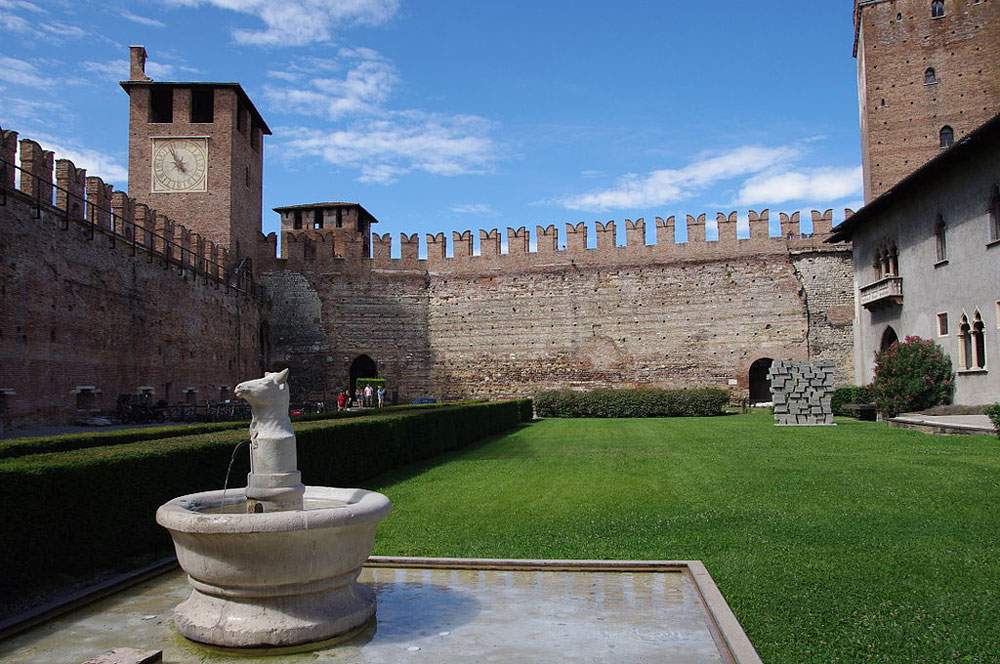Verona's Civic Museums tell their story in pills on the web
The director of the Civic Museums of Verona, Francesca Rossi, presents ten virtual appointments for a walk through the spaces of Castelvecchio. The aim is to let the public discover the museums’ heritage, collect curiosities and peculiarities from the small stories of everyday life.
The first pills were made just before the health emergency in the garden and the museum: in the garden, the inspiring thought was Vitale Zanchettin and Maddalena Scimemi’s, taken from the booklet Carlo Scarpa al Museo di Castelvecchio 1964-2014, published in 2014 edited by Alba Di Lieto and Alberto Vignolo and realized by the City of Verona in collaboration with the Order of Architects of Verona. In the Sculpture Gallery, Director Rossi’s commentary starts with a thought by Nobel laureate Omar Pamuk dedicated to museums that give happiness.
This is followed by a focus on Pisanello’s Madonna of the Quail, which refers back to a recollection by architect Maxime Ketoff written in 1996, during the mounting of the exhibition dedicated to the great artist. Finally, architect Sandro Bagnoli recounts a conversation with Carlo Scarpa about a detail of Mantegna’s Holy Family. We will then move on to the Flemish Joachim Beuckelaer who inserts a biblical quotation in one of his paintings. The last videos will refer instead to Giorgio Vasari’s Lives of the Veronese Painters placed in relation to works by Paolo Morando known as Cavazzola and Giovan Francesco Caroto belonging to the museum’s collections.
In a short video, the Museum of Natural History recounted its origins and theevolution of the exhibition methods of natural history museums: the one in Verona presents examples of all possible realizations. From the museum, considered the first natural history museum, of the pharmacist/herbalist Calzolari, who set up his chamber of wonders in the second half of the 16th century, to the Zangheri Museum, which dates back to the first half of the 20th century and is set up like a typical 19th-century museum, with display cases populated with animals in order to show the richness and diversity of the collections and nature. Examples of the mid-century exhibits offer less crowded showcases and set up in a more didactic manner, later arriving at the large ?dioramas, that is, showcases with animals contextualized in their reconstructed environment. Set up according to the most modern techniques, on the other hand, is the “Water Land Air” hall dedicated to the evolution of adaptations: here the animals are displayed without showcases.
It will continue with an account of the collections and conservation methods of herbaria, zoological collections and so-called liquid collections of many invertebrates and some vertebrates, such as fish, reptiles, amphibians and small mammals. Finally, some excursus onresearch activities, an integral part of the natural history museum, will be offered.
The Verona Civic Museums have also launched the #MuseoAgile initiative, participating in the #iorestoacasa campaign. And they are also joining Dantedì with Dante-themed video contributions.
To keep up to date with the Civic Museums’ online activities, one should visit the social channels Facebook @MuseoAffreschi @MuseoCastelvecchio @GAMverona @MSNverona @MATRverona, Instagram @museiciviciverona or visit www.museicivici.comune.verona.it
 |
| Verona's Civic Museums tell their story in pills on the web |
Warning: the translation into English of the original Italian article was created using automatic tools. We undertake to review all articles, but we do not guarantee the total absence of inaccuracies in the translation due to the program. You can find the original by clicking on the ITA button. If you find any mistake,please contact us.





























